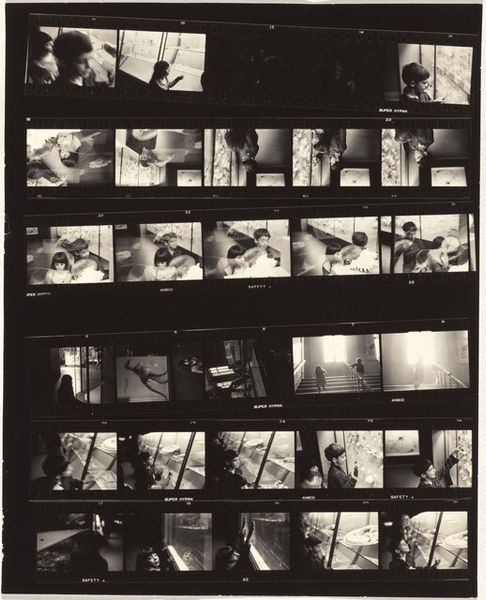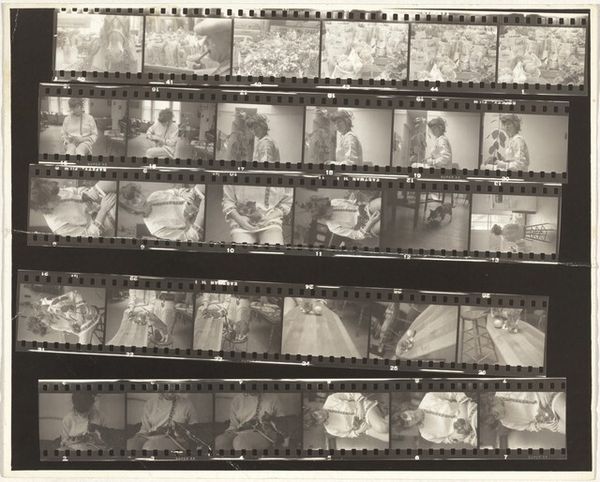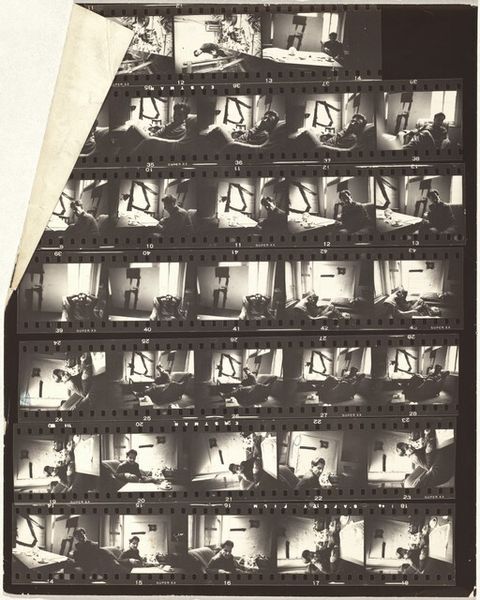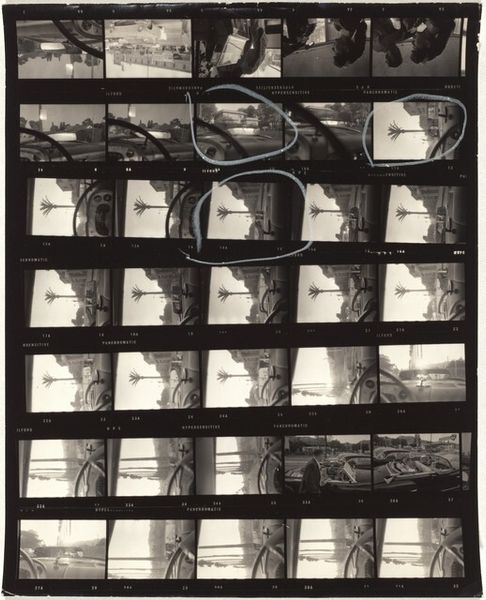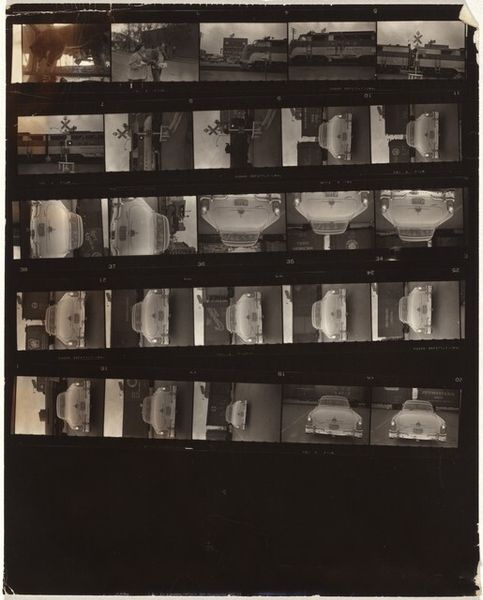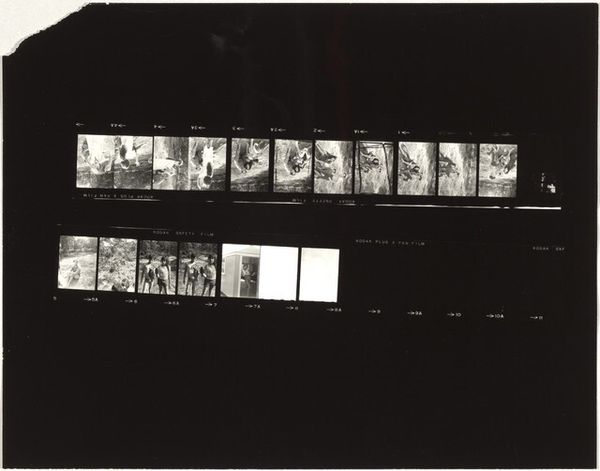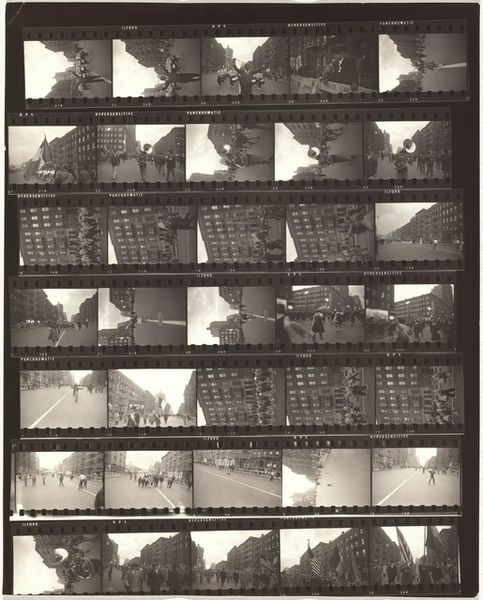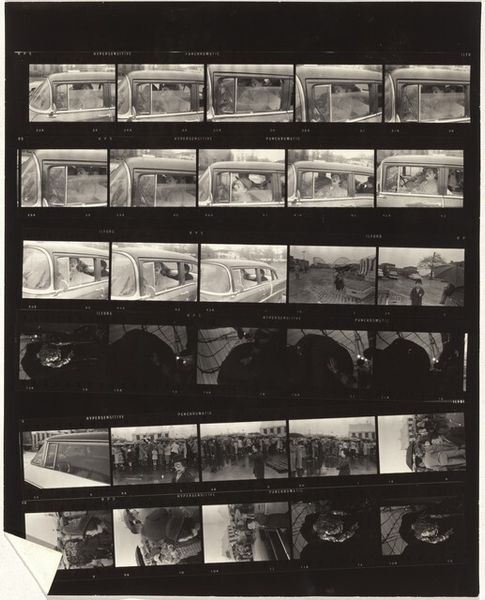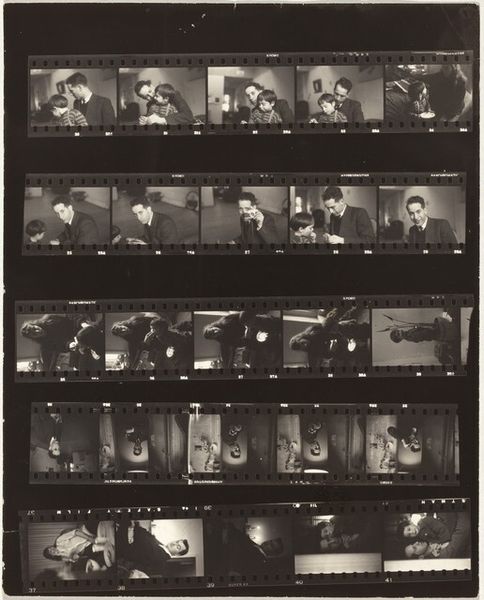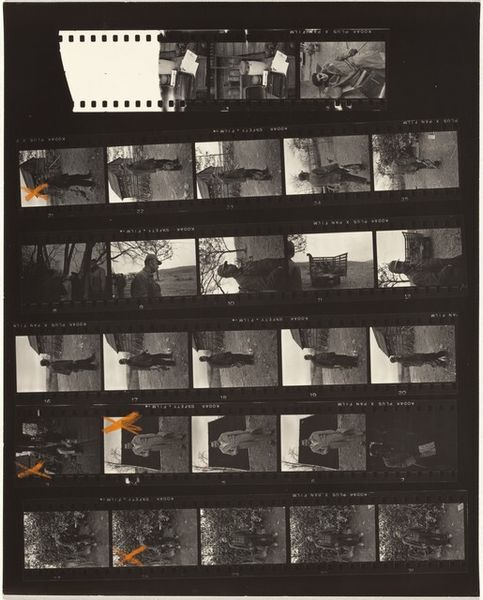
Plate Number 107. Turning to ascend stairs with a bucket of water and a broom in hands 1887
0:00
0:00
print, photography, gelatin-silver-print
#
narrative-art
# print
#
impressionism
#
desaturated colours
#
sculpture
#
figuration
#
photography
#
gelatin-silver-print
#
monochrome photography
#
monochrome
Dimensions: image: 20.15 × 35.7 cm (7 15/16 × 14 1/16 in.) sheet: 47.2 × 60.2 cm (18 9/16 × 23 11/16 in.)
Copyright: National Gallery of Art: CC0 1.0
Editor: Here we have Eadweard Muybridge’s “Plate Number 107. Turning to ascend stairs with a bucket of water and a broom in hands,” a gelatin silver print from 1887. The grid-like composition and monochrome palette give it a scientific feel, but something about the woman's repeated movements feels very poignant. What strikes you about this piece? Curator: What grabs me is precisely what you pointed out: the juxtaposition of scientific precision and the very human, gendered act being documented. Muybridge was obsessed with capturing and cataloging motion, contributing to scientific advancements of the time, but this image, especially viewed through a contemporary lens, raises questions about labor, class, and the female body. What narratives do you see unfolding within the frames? Editor: I guess I hadn't considered it like that. The repetition almost numbs you to the difficulty of the task. She's stuck in a loop, climbing and cleaning, almost erased as an individual. Is Muybridge acknowledging this or simply using her as a means to an end? Curator: That's a crucial question. Consider the social context. What expectations were placed on women, particularly working-class women, during the late 19th century? Muybridge’s intentions are complex and debatable, but the images themselves become a document of their time, reflecting and perhaps even reinforcing those social norms. Does the image itself reinforce a certain perspective, regardless of his intentions? Editor: It's hard to ignore that now. I initially saw the grid as purely scientific, but now it feels almost like a cage, trapping her in this endless cycle. Thanks for that insight! Curator: Exactly! And seeing that shift in perspective is vital to interpreting historical artwork. By understanding these visual vocabularies we can discuss the ideas being represented through an intersectional lens, examining gender, labour, and social status and the systems of power inherent within the historical moment.
Comments
No comments
Be the first to comment and join the conversation on the ultimate creative platform.


